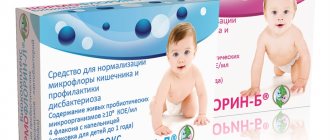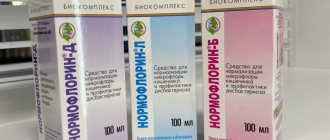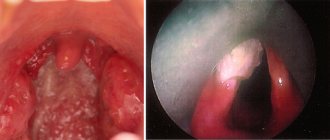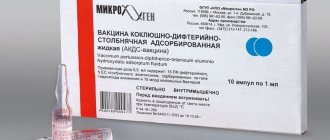Detailed description of the study
Tetanus is an acute infectious disease that causes muscle hypertonicity and seizures. These symptoms are caused by the action of a toxin from the causative agent of the disease, the bacterium Clostridium tetani. This microorganism has the shape of a rod with rounded ends and can only live in an environment deprived of oxygen. Upon contact with air, it forms a spore that is resistant to various physical and chemical factors.
Tetanus is most often found in children and agricultural workers. A person becomes infected through injuries, scratches and other, even minor, damage to the skin when bacterial spores found in the soil enter the wound. There is also a possibility of infection during childbirth outside a medical facility.
This infection is divided into general and local tetanus, which is rare. The main role in the development of the clinical picture is played by tetanus toxin (exotoxin), consisting of tetanospasmin. It is a neurotoxin, its effect on the body is expressed mainly by damage to the nervous system and is characterized by the development of tonic (tension) and convulsive contractions of striated muscles, while in the intervals between convulsions the skeletal muscles do not relax, causing severe pain in the patient. The infection can occur in mild, moderate, severe and very severe forms. In most cases, the disease begins acutely. Specific manifestations of tetanus are:
- Trismus - tension in the masticatory muscles;
- Spasm of facial muscles, which causes a characteristic facial expression - a “sardonic smile”;
- Dysphagia is a swallowing disorder that occurs due to overstrain of the muscular layer of the pharynx;
- Stiffness - tension - in the neck muscles.
Symptoms of tetanus may also include:
- Dull nagging pain and muscle twitching at the site of skin injury;
- Sweating, irritability;
- Tension of the muscles of the whole body, with severe infection, opisthotonus develops - a characteristic position of the patient’s body when the lumbar part is raised above the bed and the head is thrown back;
- Disorders of defecation and urination;
- Temperature rise to 41-42 °C;
- Dyspnea.
Immunity after an illness is unstable, so re-infection is possible. However, the incidence of tetanus in our country is minimal. This is facilitated by the implementation of preventive measures to prevent the occurrence of this disease.
Prevention of tetanus can be specific and nonspecific. The latter involves preventing injuries at home and at work, eliminating the possibility of infection of wounds in medical institutions, as well as treating areas of skin damage. Specific prevention or immunoprophylaxis is human immunization, which includes vaccination.
The most effective way to prevent tetanus infection is vaccination. The DPT vaccine contains tetanus and diphtheria toxoids, as well as killed whole pertussis bacillus, which makes it possible to prevent these diseases in children. Adolescents and adults are vaccinated with diphtheria-tetanus toxoid (ADS-M toxoid).
Vaccination of children is carried out in accordance with the National Calendar of Preventive Vaccinations adopted in the Russian Federation from 3 months to 14 years at certain intervals. Further, to maintain tetanus immunity, it is necessary to be vaccinated at intervals of 10 years and, if necessary, undergo a study to determine the strength of post-vaccination immunity.
Antitetanus antibodies.
After vaccination, the body produces special molecules - antibodies, aimed at preventing the development of the disease in case of infection. This study serves to determine IgG antibodies (responsible for the immune response) to tetanus toxoid in the blood serum and decide on the need for vaccination and revaccination.
Tetanus toxoid purified adsorbed liquid - AS
FSUE NPO Microgen, Ministry of Health of the Russian Federation, JSC Biomed, Russia
Release form: 1 ampoule / 2 doses No. 10.
Vaccination schedule: the vaccination course for persons who have not previously been vaccinated against tetanus consists of two vaccinations with an interval of 30-40 days and revaccination after 6-12 months. Subsequent revaccinations are carried out every 10 years.
INSTRUCTIONS FOR USE Tetanus toxoid purified adsorbed liquid for donors (AS-anatoxin for donors), suspension for subcutaneous administration
The drug is a tetanus toxin neutralized by formaldehyde and heating, purified from ballast proteins and adsorbed on aluminum hydroxide gel. The drug contains in 1 ml (1 dose) 40 binding units (EC) of tetanus toxoid, no more than 1.1 mg of aluminum hydroxide (sorbent), from 80 to 120 mcg of merthiolate (preservative) and no more than 200 mcg of formaldehyde. A yellowish-white suspension without foreign inclusions, which separates upon settling into a clear supernatant liquid and a loose sediment, which completely breaks up when shaken.
BIOLOGICAL PROPERTIES. The drug causes the formation of specific antitoxic antibodies in people who have been immunized.
PURPOSE. Immunization of donors to obtain antitetanus plasma and antitetanus immunoglobulin.
METHOD OF APPLICATION AND DOSAGE. AC toxoid for donors is injected deep subcutaneously into the subscapular region. Before vaccination, the ampoule must be thoroughly shaken until a homogeneous suspension is obtained. The opening of ampoules and the vaccination procedure are carried out in strict compliance with the rules of asepsis and antiseptics. The drug cannot be stored in an opened ampoule. The drug is not suitable for use in ampoules with damaged integrity, lack of labeling, changes in physical properties (change in color, presence of unbreakable flakes), expired expiration dates, or improper storage. AS-toxoid for donors is used in accordance with the current “Instructions for immunization of donors for the purpose of producing tetanus immunoglobulin”.
The drug is administered in the following cases: 1. For the first revaccination of donors who have received two injections of AC toxoid containing 20 EU/ml. 2. For subsequent revaccinations of donors with a known vaccination history after 5 years after the previous administration of drugs containing tetanus toxoid. For revaccination of donors with an unknown vaccination history, in whose blood serum, during the initial background examination, the content of tetanus antitoxin (by ELISA) was found to be in the range of 0.01-4 IU per 1 ml. Note: Donors with serum levels of 8 or 16 IU should be given tetanus toxoid containing 20 EU/ml. When selecting donors for immunization and plasmapheresis, it is necessary to be guided by the general provisions provided for by the “Instructions for medical examination of blood, plasma and blood cell donors”, approved by the Ministry of Health of the Russian Federation on November 16, 1998.
SIDE EFFECTS. AS-toxoid for donors is a weakly reactogenic drug. Some donors may develop short-term general reactions (fever, malaise) and local reactions (pain, hyperemia, swelling) in the first two days. In extremely rare cases, allergic reactions may develop (Quincke's edema, urticaria, polymorphic rash), a slight exacerbation of allergic diseases. Considering the possibility of developing immediate allergic reactions in particularly sensitive individuals, vaccinated individuals must be monitored for 30 minutes. Immunization sites must be provided with anti-shock therapy.
INTERACTION WITH OTHER MEDICINES. Interaction with other drugs has not been established.
CONTRAINDICATIONS. Donors who have suffered acute illnesses are immunized no earlier than 1 month after recovery or remission.
RELEASE FORM. In ampoules of 1 ml. 10 ampoules with instructions for use, an ampoule knife or an ampoule scarifier in a pack.
VARIATION CONDITIONS. For medical and preventive institutions.
BEST BEFORE DATE. STORAGE AND TRANSPORTATION CONDITIONS. Shelf life: 3 years. The drug is stored (out of reach of children) and transported in accordance with SP 3.3.2.1248-03 at a temperature of 2 to 8 °C. Freezing is not allowed.
Complaints regarding the quality of the drug, with the obligatory indication of the batch number and date of manufacture, should be sent to the Federal State Budgetary Institution GISK named after. L.A. Tarasevich (119002, Moscow, Sivtsev-Vrazhek, 41, tel. 241-39-22, fax 241-92-38) and to the address of the enterprise, 115088, Moscow, st. 1st Dubrovskaya, 15, tel., fax 981 -62-09; (Production address: 614089, Perm, Bratskaya st., 177, tel.).
← Back
Tetanus toxoid purified adsorbed liquid (AS-anatoxin) (Anatoxinum tetanicum purificatum adsorptum fluidum) Active ingredient: Tetanus toxoid (Anatoxin tetanus)
Instructions for medical use Dosage form Suspension for subcutaneous administration. Composition A single dose of the drug (0.5 ml) contains: 10 binding units (EC) of tetanus toxoid, no more than 1.25 mg of aluminum hydroxide in terms of aluminum (sorbent), from 42.5 to 57.5 mcg thiomersal (preservative) .
Description of the dosage form A suspension of grayish-white color, which separates when standing into a loose grayish-white sediment that breaks up when shaken, and a transparent colorless supernatant liquid.
Characteristics Tetanus toxoid purified, adsorbed, liquid is a tetanus toxin neutralized by formaldehyde and heat, purified from ballast proteins, adsorbed on aluminum hydroxide.
Pharmacological group MIBP-anatoxin
Indications The drug is intended for active immunization against tetanus (for persons who have not previously been vaccinated against tetanus), as well as for emergency specific prevention of tetanus.
Contraindications Permanent contraindications are a strong reaction or post-vaccination complication to a previous administration of AC-toxoid. The use of routine vaccinations is not recommended for pregnant women and during difficult feeding. Persons who have suffered acute diseases are vaccinated no earlier than 1 month after clinical recovery. Patients with chronic diseases are vaccinated no earlier than 1 month after achieving remission. Children with neurological disorders (reflex muscle rigidity, facial asymmetry, hand tremors, neuralgia) are vaccinated after progression of the process has been ruled out. For patients with allergic diseases, vaccinations are carried out 2-4 weeks after the end of the exacerbation, while stable manifestations of the disease (localized skin phenomena, hidden bronchospasm, etc.) are not contraindications to vaccination, which can be carried out against the background of appropriate therapy. Immunodeficiencies, HIV infection, as well as maintenance course therapy, including steroid hormones and anticonvulsants, are not contraindications to vaccination. In order to identify contraindications, the doctor (paramedic at the medical and obstetric station) on the day of vaccination conducts a survey of parents and an examination of the vaccinated with mandatory thermometry. When vaccinating adults, preliminary selection of persons to be vaccinated is allowed, with their interview by the medical worker conducting the vaccination on the day of vaccination. Persons temporarily exempt from vaccination must be monitored and registered and vaccinated in a timely manner.
Use during pregnancy and breastfeeding Use during pregnancy and breastfeeding is possible only for absolute epidemiological indications, taking into account the risk/benefit ratio, i.e. when the expected benefit to the mother outweighs the expected risk to the fetus or infant. Use by children and adults with chronic diseases is given in the “Contraindications for use” section.
Directions for use and doses
AC-toxoid is injected deep subcutaneously into the subscapular region in a dose of 0.5 ml (single dose). Before vaccination, the ampoule must be thoroughly shaken until a homogeneous suspension is obtained. The administration of the drug is registered in the established accounting forms, indicating the batch number, expiration date, manufacturer, and date of administration. Active immunization: The full course of vaccination with AC-toxoid (for persons not previously vaccinated against tetanus) consists of two 0.5 ml vaccinations with an interval of 30-40 days. And revaccinations after 6-12 months once at the same dose (as an exception, the interval can be extended to 2 years). Subsequent revaccinations are carried out every 10 years with AS or ADS-M toxoid once in the same dose. Immunization of some hard-to-reach populations (elderly people, unorganized population), taking into account specific conditions in certain areas, by decision of the Ministry of Health and Social Development of the Russian Federation, can be carried out according to an abbreviated scheme, providing for a single administration of AC-anatoxin in a double dose (1.0 ml) with the first revaccination in the period from 6 months to 2 years and subsequent revaccinations every 10 years with the usual doses of the drug (0.5 ml).
Emergency prevention of tetanus: Emergency specific prevention of tetanus is carried out for: • Injuries with violation of the integrity of the skin and mucous membranes; • Frostbite and burns (thermal, chemical, radiation) of the second, third and fourth degree; • Out-of-hospital abortions; • Childbirth outside medical institutions; • Gangrene or tissue necrosis of any type, long-term abscesses; • Animal bites; • Penetrating injuries of the gastrointestinal tract. Emergency prevention of tetanus involves primary surgical treatment of the wound and the creation, if necessary, of specific immunity against tetanus. Emergency immunoprophylaxis of tetanus should be carried out as early as possible from the moment of injury, up to 20 days, taking into account the length of the incubation period for tetanus disease. For emergency specific prevention of tetanus, the following is used: • AS-toxoid; • antitetanus human immunoglobulin (PSHI); • in the absence of PSCI, purified concentrated liquid antitetanus serum (PSS). The choice of prophylactic agents for emergency specific prophylaxis of tetanus is presented in Table 1. PSCH is administered in a dose of 250 IU intramuscularly into the upper outer quadrant of the buttock (see instructions for use of antitetanus human immunoglobulin). PSS is administered in a dose of 3000 IU subcutaneously (see instructions for use of antitetanus serum).
Notes: 1. Instead of 0.5 ml AC, ADS-M can be used if vaccination against diphtheria is necessary. 2. For “infected” wounds, 0.5 ml of AS is administered if 5 or more years have passed since the last revaccination. 3. The full course of AS immunization for adults consists of two vaccinations of 0.5 ml each with an interval of 30-40 days and revaccination after 6-12 months with the same dose. According to the abbreviated scheme, the full course of immunization includes a single vaccination with AC in a double dose (1.0 ml) and revaccination after 1-2 years with a dose of 0.5 ml of AC. 4. Two vaccinations according to the regular immunization schedule (for adults and children) or one vaccination with an abbreviated immunization schedule for adults. 5. All persons who received active-passive prophylaxis must be revaccinated with 0.5 ml of AC in 6 months to 2 years to complete the course of immunization. 6. After normalization of the post-traumatic state, children should be vaccinated with the DTP vaccine. Side effects AC-anatoxin is a weakly reactogenic drug. Some vaccinated people may develop short-term general (fever, malaise) and local soreness, hyperemia, swelling at the injection site in the first two days. Allergic reactions may develop (Quincke's edema, urticaria, polymorphic rash), exacerbation of allergic diseases. Considering the possibility of developing immediate allergic reactions in particularly sensitive individuals, vaccinated individuals must be provided with medical supervision for 30 minutes. Vaccination sites must be provided with anti-shock therapy. For persons who have suffered severe forms of allergic reactions to the administration of AC-anatoxin, further routine vaccinations with the drug are stopped. Overdose
No overdose symptoms were identified. Interaction
Interactions with other drugs have not been established. Precautions AC-toxoid is a grayish-white suspension. During storage, a grayish-white precipitate and a clear supernatant may form. Before use, the vaccine must be shaken thoroughly until a homogeneous, grayish-white suspension is obtained and checked visually for the absence of foreign particles and/or changes in appearance. If foreign particles or changes in appearance are detected, the vaccine should not be used. The drug is also not suitable for use in ampoules with damaged integrity, lack of labeling, or improper storage. The opening of ampoules and the vaccination procedure are carried out in strict compliance with the rules of asepsis and antiseptics. The drug cannot be stored in an opened ampoule. Vaccination is carried out with caution in patients with chronic diseases, neurological disorders and allergic reactions. special instructions
Effect on the ability to drive vehicles and machinery: The drug does not affect the ability to drive vehicles. Release form
AC-toxoid is produced in the form of a suspension for subcutaneous administration in ampoules containing 0.5 ml (one vaccination dose) or 1.0 ml (two vaccination doses). 5 ampoules in a blister pack. Two contour blister packs along with instructions for use or 10 ampoules with a separating snake and instructions for use and an ampoule scarifier in a cardboard pack. When using ampoules with a break ring or break point, do not insert an ampoule scarifier. Storage conditions
Should be stored in a dry place, protected from light, at a temperature of 4 to 8 °C. Do not freeze. The drug that has been frozen cannot be used. Keep out of the reach of children. Best before date
3 years. Do not use after the expiration date. Conditions for dispensing from pharmacies
Vacation only for medical institutions.
Manufacturer: SERUM INSTITUTE OF INDIA PVT. LTD. 212/2, Hadapsar, Pune 411 028, INDIA
Immunological control for emergency prophylaxis of tetanus
In the absence of reliable information about vaccinations, the state of tetanus immunity is assessed immediately at the time of the patient’s treatment for injury. The scheme for choosing emergency prophylaxis is based on the results of determining the level of a specific antitoxin in the blood serum of a patient with trauma or on indirect criteria for the fact of vaccination against tetanus (age, gender, absence of contraindications, military service, etc.)
A blood volume of 0.2 ml sufficient for research can be obtained from a wound or simultaneously with taking blood from a finger for any clinical analysis. Blood is collected into a capillary or test tube, which is left at room temperature or in a household refrigerator for 15-20 minutes, after which the supernatant liquid over the red blood cells (serum) is used for serological studies.
When taking blood from a vein, a standard method of separating blood serum is used. The determination of tetanus antitoxin in the patient’s blood serum is carried out in the RPGA in accordance with the instructions for the use of diagnosticums. The minimum titer of tetanus antitoxin, indicating immunization, is 1:20.
Emergency prophylaxis of tetanus
Emergency prevention of tetanus begins with primary surgical treatment of the wound and simultaneous specific immunoprophylaxis. Emergency immunoprophylaxis for tetanus should be carried out as early as possible and up to 20 days after the injury, taking into account the length of the incubation period for tetanus.
Emergency prophylaxis of tetanus is carried out when:
- frostbite and burns (chemical, thermal, radiation) of the 2nd, third and fourth degree;
- injuries in which there was a violation of the integrity of the skin and mucous membranes;
- abortions performed outside of hospitals;
- penetrating injuries of the gastrointestinal tract;
- gangrene or tissue necrosis of any type, long-term carbuncles, abscesses;
- childbirth outside of medical institutions (for example, at home);
- animal bites.
Note
<1> Instead of 0.5 ml of adsorbed tetanus toxoid, ADS-M can be used if vaccination against diphtheria with this drug is necessary. If the localization of the wound allows, it is preferable to introduce AS into the area where it is located by subcutaneous injection.
<2> Use one of the following drugs: PSCHI or PSS (it is preferable to administer PSCHI).
<3> For “infected” wounds, 0.5 ml of AS is administered if 5 or more years have passed since the last revaccination.
<4> The full course of AS immunization for adults consists of two vaccinations of 0.5 ml each with an interval of 30-40 days and revaccination after 6-12 months. the same dose. According to the abbreviated scheme, the full course of immunization includes a single vaccination with AC in a double dose (1 ml) and revaccination after 1-2 years with a dose of 0.5 ml of AC.
<5> Two vaccinations according to the regular immunization schedule (for adults and children) or one vaccination according to the abbreviated immunization schedule for adults.
<6> For “infected” wounds, PSCH or PSS is administered.
<7> All people who received active-passive prophylaxis to complete the course of immunization after 6 months. - 2 years old should be vaccinated again with 0.5 ml of AC.
<8> After the post-traumatic state has normalized, children should be vaccinated with the DTP vaccine.







